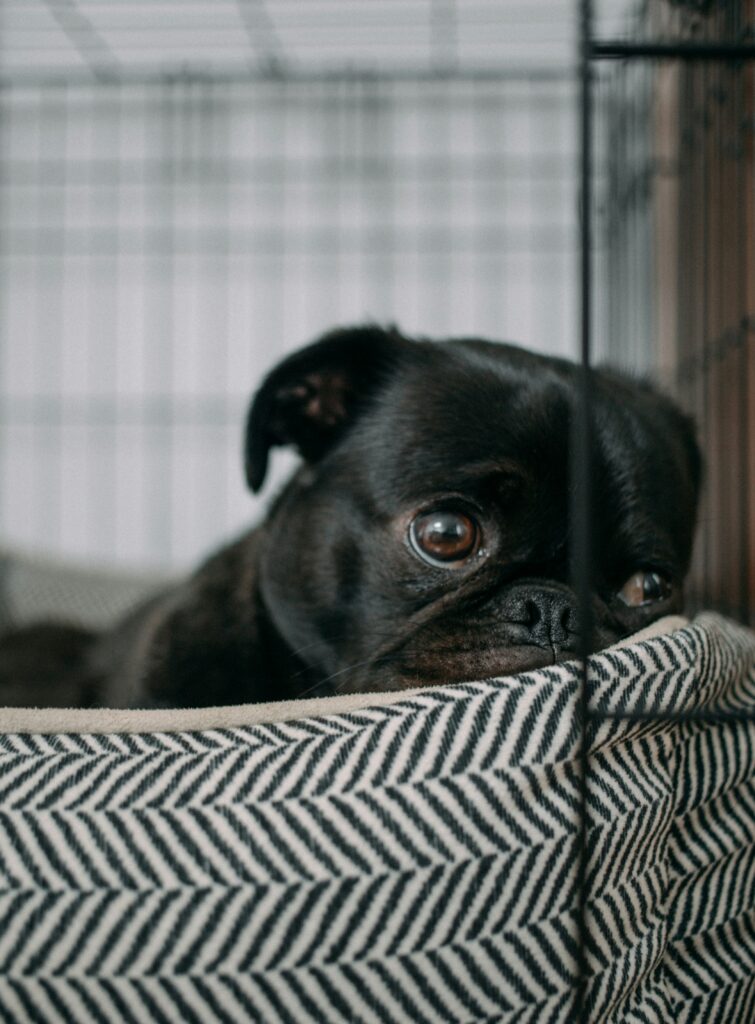Separation anxiety is a big topic among us dog owners, as we know our furry friends thrive on companionship. Whether it’s a wagging tail greeting us at the door or the comfort of having them close by, dogs are happiest when they’re with us. But what happens when you have to leave for work, run errands, or go out for the evening? For some dogs, these moments of separation can trigger anxiety that’s distressing for both the dog and the owner.

What is separation anxiety?
Separation anxiety is a common behavioural issue in dogs, characterized by extreme distress when they are left alone. Signs of separation anxiety can vary but often include excessive barking or whining, destructive behaviour like chewing furniture or scratching doors, and even attempts to escape the house. In severe cases, dogs might exhibit physical symptoms such as drooling, trembling, or even vomiting.
This condition can be challenging for pet owners, but understanding the root causes and knowing how to address them can make a significant difference in your dog’s well-being.
What causes separation anxiety?
Separation anxiety can develop for various reasons, including:
Change in routine: Dogs are creatures of habit, and a sudden change in their daily routine, such as a new job schedule or a move to a new home, can trigger anxiety.
Lack of socialization: Puppies that aren’t properly socialized or dogs that have spent long periods in shelters may develop separation anxiety due to their limited exposure to different environments and people.
Past trauma: Rescue dogs or those with a history of abandonment may be more prone to separation anxiety because of their fear of being left alone again.
Understanding the cause is the first step in helping your dog overcome separation anxiety.

How to solve separation anxiety
If your dog is struggling with separation anxiety, there are several strategies you can implement to help them feel more secure and reduce their anxiety:
1. Gradual desensitization
One of the most effective ways to address separation anxiety is through gradual desensitization. This process involves slowly getting your dog accustomed to being alone by starting with short absences and gradually increasing the time you’re away. For example, you might start by leaving your dog alone for just a few minutes, then gradually extend this to longer periods. The goal is to show your dog that your absence is temporary and not something to fear.
2. Create a safe space
Designate a comfortable, safe space in your home where your dog feels secure when you’re not there. This could be a cozy corner with their favourite bed, toys, and perhaps an item of your clothing that carries your scent. By associating this space with positive experiences, your dog may feel less anxious when you leave.
3. Practice calm departures and arrivals
Dogs pick up on our emotions, so if you make a big deal out of leaving or returning home, your dog might become more anxious. Try to keep your departures and arrivals low-key. Avoid prolonged goodbyes or overly enthusiastic greetings. This helps your dog understand that coming and going is a normal part of the day, not something to get worked up about.
4. Use positive reinforcement
Reward your dog for calm behaviour when you return. This could be with treats, praise, or extra playtime. Positive reinforcement encourages your dog to associate your absence with positive outcomes, making them less likely to panic when you leave.
5. Provide mental and physical stimulation
A tired dog is a happy dog! Ensure your dog gets plenty of exercise and mental stimulation before you leave the house. Long walks, play sessions, and puzzle toys can help tire your dog out, making them more likely to rest and relax while you’re gone.
6. Consider professional help
If your dog’s separation anxiety is severe, it might be time to seek professional help. A certified dog trainer or behaviourist can work with you to develop a customized plan for managing your dog’s anxiety. In some cases, your veterinarian may recommend medications to help ease your dog’s anxiety during the training process.

Conclusion
Separation anxiety in dogs can be a distressing issue, but with patience, understanding, and the right approach, it’s possible to help your dog feel more comfortable when left alone. By gradually desensitizing them to your absence, creating a safe space, and reinforcing calm behaviour, you can reduce your dog’s anxiety and improve their quality of life.
If you’re struggling with your dog’s separation anxiety, don’t hesitate to reach out to us. At Caparica Dogs, we offer expert training and support to help you and your dog live a happier, stress-free life. Contact us today to learn more about how we can help!

